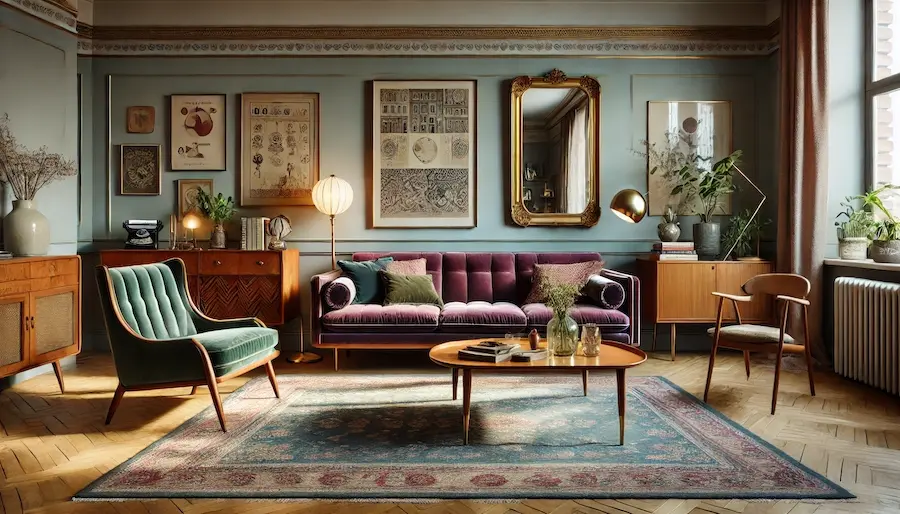Vintage modern design seamlessly blends the charm of bygone eras with the sleekness of contemporary aesthetics, creating living spaces that are both nostalgic and current. This fusion allows homeowners to enjoy the best of both worlds, combining timeless elegance with modern functionality.
History and Origins of Vintage Modern Design
The vintage modern style, also known as transitional design, emerged in the mid-20th century as a response to the desire for interiors that harmoniously combine traditional and contemporary elements. This approach integrates classic design motifs with modern materials and techniques, resulting in spaces that feel both familiar and innovative. The style gained prominence as designers sought to create environments that were neither overly ornate nor starkly minimalistic, but rather a balanced blend of both.
Key Features of Vintage Modern Living Rooms
- Furniture: Incorporating mid-century modern pieces, such as sleek sofas and iconic chairs, adds a vintage touch while maintaining contemporary comfort. For instance, the Eames lounge chair or a Noguchi coffee table can serve as focal points in the room.
- Color Palette: Neutral tones like whites, creams, and grays serve as the foundation, accented by vibrant hues from the 1950s and 1960s, such as mustard yellows or teal blues, to add visual interest.
- Materials: A mix of natural materials like wood and stone with modern metals and glass creates a unique juxtaposition, enhancing the vintage modern appeal.
- Decor: Incorporating vintage accessories, such as antique mirrors, retro lighting fixtures, or classic artwork, adds character and a sense of history to the space.
Applications of Vintage Modern Design
This design approach is versatile and can be applied to various aspects of a living room:
- Seating Arrangements: Pairing a modern sectional sofa with vintage armchairs creates a harmonious blend of old and new.
- Lighting: Combining contemporary recessed lighting with vintage-inspired pendant lights or floor lamps adds depth and interest.
- Accessories: Displaying a mix of modern art and vintage decorative items, such as an antique clock or retro vases, personalizes the space and reflects a curated aesthetic.
Considerations When Choosing Vintage Modern Design
- Balance: Achieving the right mix between vintage and modern elements is crucial. Too many vintage pieces can make the space feel dated, while an excess of modern items may lack character.
- Quality: Investing in high-quality vintage pieces ensures longevity and adds authentic charm to the room. Antique stores or thrift shops can be excellent sources for such items.
- Cohesion: Maintaining a cohesive color scheme and style throughout the room helps unify the vintage and modern elements, creating a harmonious environment.
Conclusion
A vintage modern living room offers a unique and personalized space that reflects both historical charm and contemporary sophistication. By thoughtfully blending elements from different eras, homeowners can create a living area that is both timeless and current, providing comfort and style for years to come.
